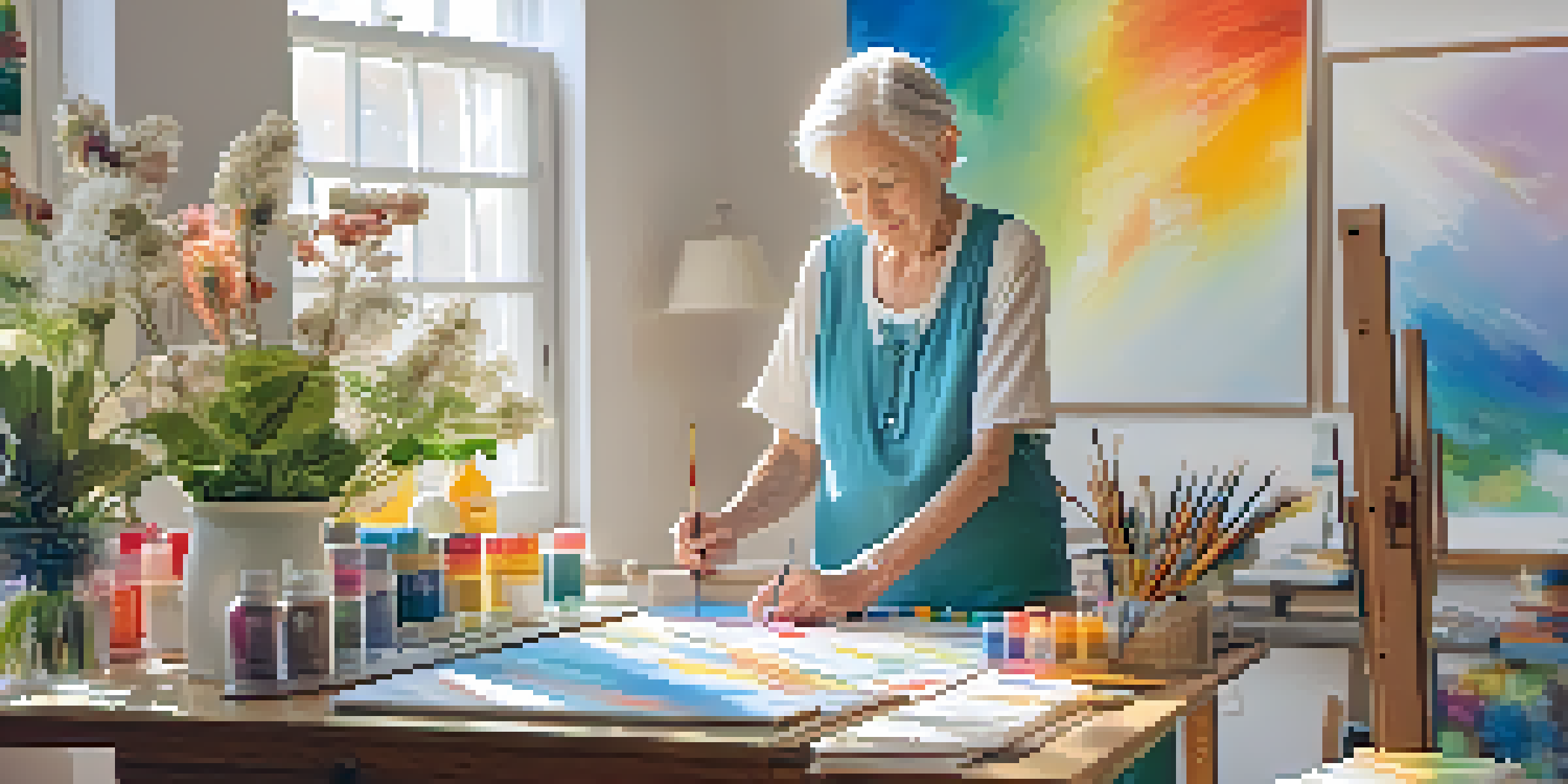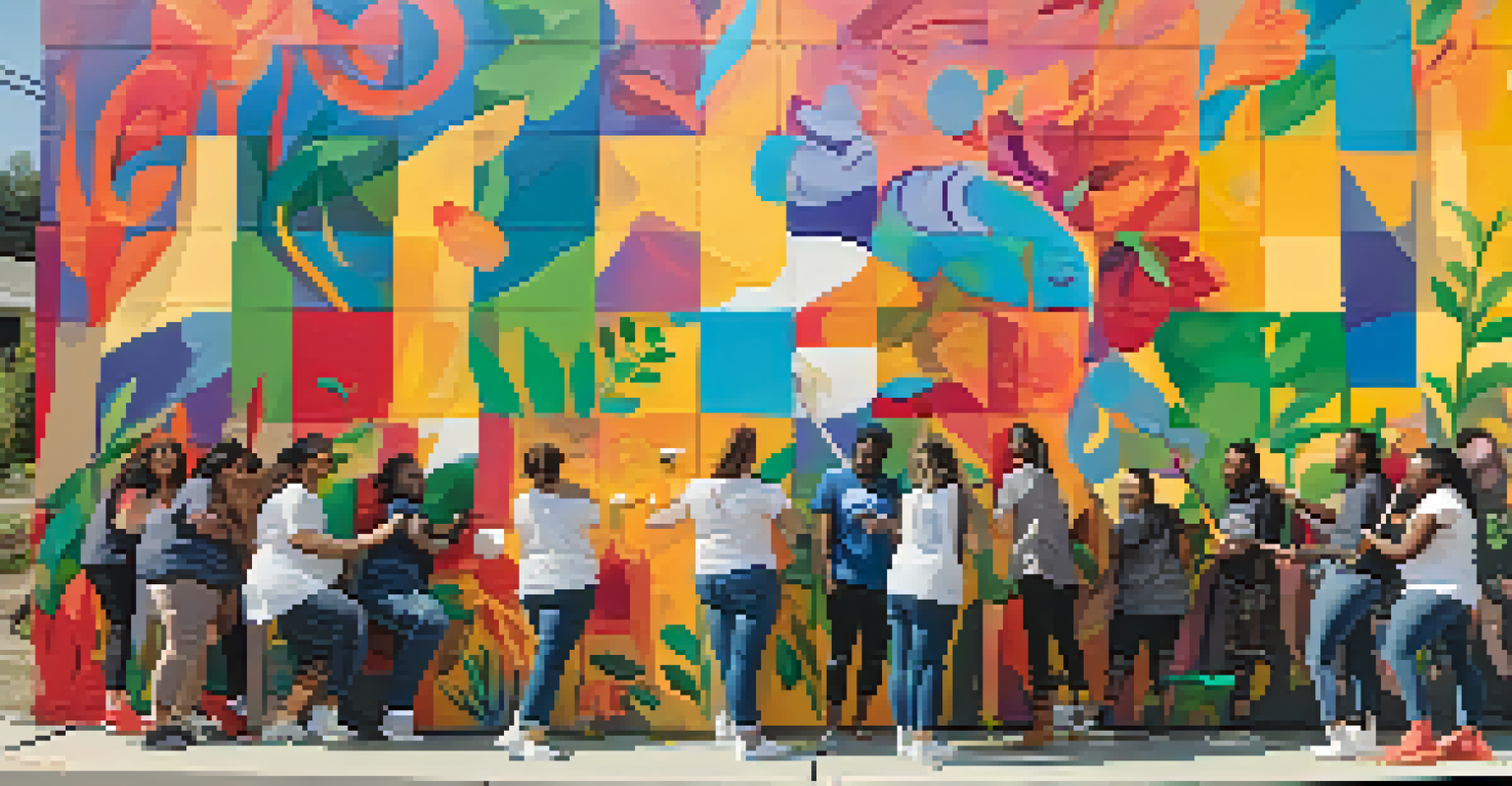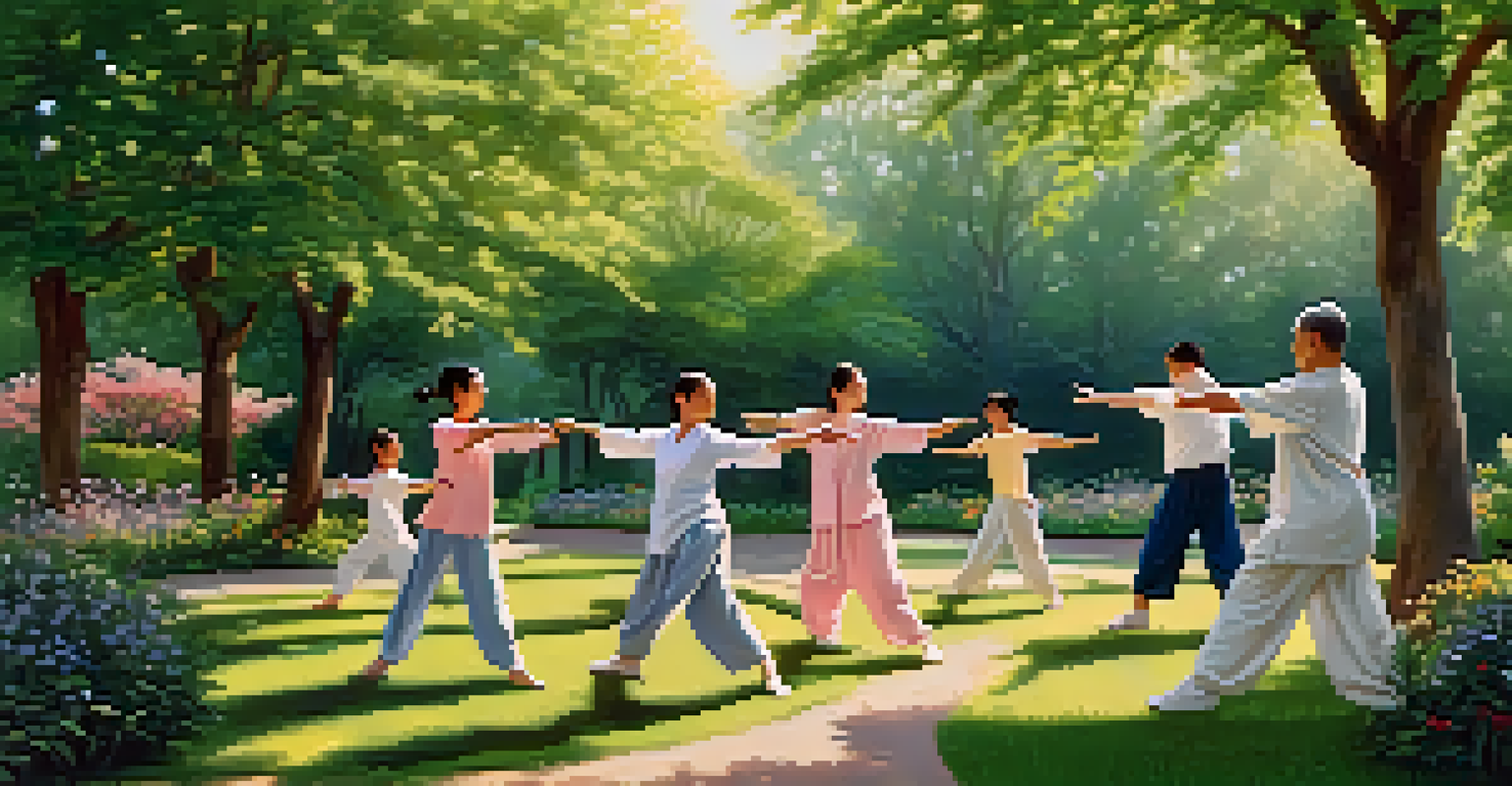Art for Healing: Lessons from Global Health Practices

Understanding the Connection Between Art and Healing
Art has long been recognized as a form of expression, but its therapeutic benefits are increasingly gaining attention. Through various mediums, such as painting, music, and dance, individuals can explore their emotions and experiences. This connection between creativity and healing is rooted in many cultures and is supported by psychological research, demonstrating art's ability to improve mental health.
Art enables us to find ourselves and lose ourselves at the same time.
Many global health practices incorporate artistic elements as a way to promote well-being. For instance, in some Indigenous cultures, storytelling through art helps individuals process trauma and connect with their heritage. This practice not only fosters healing but also strengthens community bonds, emphasizing the role of art as a collective experience.
As we delve deeper into the world of art for healing, it's essential to recognize that this connection is not just about personal expression. It also involves understanding cultural contexts and the collective narratives that shape healing practices around the globe. Art becomes a bridge, linking personal experiences to broader cultural stories.
The Role of Art Therapy in Modern Healthcare
Art therapy is a clinical approach that utilizes artistic activities to help individuals express themselves and cope with emotional challenges. Trained therapists guide clients in using various art forms to explore feelings, which can be particularly helpful for those who struggle to articulate their thoughts verbally. This method is gaining popularity in hospitals and mental health facilities worldwide.

Incorporating art therapy into treatment plans has shown remarkable results, particularly for patients dealing with trauma, anxiety, and depression. For example, studies have demonstrated that patients who engage in creative activities report lower levels of stress and an improved sense of well-being. The hands-on nature of art allows for a unique way to confront and process difficult emotions.
Art as a Healing Tool
Art serves as a powerful therapeutic medium, helping individuals express emotions and cope with mental health challenges.
Moreover, art therapy is not limited to any age group or demographic. Children, adults, and even elderly individuals can benefit from this form of therapy. Whether it's creating a painting or participating in a group mural, the act of making art fosters a sense of accomplishment and connection, enhancing the overall healing process.
Cultural Practices: Art as a Healing Tool Worldwide
Around the globe, different cultures have embraced art as a means of healing, often blending it with traditional medicine. In Africa, for instance, music and dance are integral to healing rituals, where participants engage in performances that promote emotional release and communal support. These practices highlight the significance of art as a communal experience, reinforcing social ties and collective healing.
Creativity takes courage.
Similarly, in Asia, practices like Tai Chi and calligraphy are not just forms of artistic expression; they also serve as pathways to mental clarity and emotional balance. Participants often find that these activities help them reconnect with themselves, reducing stress and anxiety in the process. This intertwining of art and wellness illustrates the universal desire for healing through creative expression.
By examining these global practices, we can appreciate how art transcends boundaries, offering solace and healing across cultures. The lessons learned from these diverse approaches can inform contemporary therapeutic practices, encouraging a more holistic view of health that integrates creativity into the healing process.
Art in Hospitals: Enhancing Patient Experiences
The integration of art in healthcare settings is becoming increasingly common, as hospitals recognize its potential to enhance patient experiences. Art installations, murals, and music therapy programs create a more welcoming and comforting environment for patients and their families. This shift toward incorporating art helps to alleviate anxiety and fosters a sense of calm.
Research indicates that patients exposed to art in healthcare settings often experience shorter recovery times and a greater overall satisfaction with their care. For example, a study found that patients in rooms with artwork reported feeling less pain and discomfort compared to those without. This demonstrates the tangible impact that art can have on the healing process.
Cultural Practices Enhance Healing
Various cultures incorporate artistic practices into healing rituals, emphasizing the communal and collective aspects of recovery.
Moreover, hospitals are now collaborating with local artists to create spaces that reflect community culture, further enriching the patient experience. By making art an integral part of healthcare, facilities not only support recovery but also promote a sense of belonging and connection, which is vital during challenging times.
Mindfulness and Creativity: A Healing Combination
Mindfulness practices, when combined with creative activities, can significantly enhance emotional well-being. Engaging in art while being present in the moment encourages individuals to focus on their thoughts and feelings without judgment. This blend of mindfulness and creativity promotes self-awareness and emotional regulation, leading to a healthier mental state.
For instance, activities like adult coloring books, which have surged in popularity, allow individuals to immerse themselves in the present while expressing their creativity. This simple act can serve as a form of meditation, helping to reduce anxiety and improve focus. Such practices demonstrate that healing can be both enjoyable and therapeutic.
By fostering an environment where mindfulness and creativity coexist, individuals can embark on a personal journey toward healing. This approach encourages exploration and self-discovery, empowering people to confront their emotions and build resilience in the face of life's challenges.
Art and Community: Building Connections for Healing
Community art projects play a vital role in fostering connections and promoting healing among participants. These initiatives often bring together individuals from diverse backgrounds, allowing them to collaborate on creative expressions that reflect shared experiences. This sense of belonging can be incredibly powerful, especially for those who may feel isolated or marginalized.
For example, community murals or collaborative installations can serve as a visual representation of collective stories, celebrating resilience and hope. These projects not only beautify spaces but also create a sense of ownership and pride among community members. By participating in these artistic endeavors, individuals can experience healing through connection and shared purpose.
Future of Art in Healthcare
The integration of art into healthcare is expanding, supported by technological advancements and a growing recognition of its therapeutic benefits.
Furthermore, community art projects can provide opportunities for dialogue and understanding, breaking down barriers between different groups. By sharing their stories through art, participants can foster empathy and compassion, ultimately leading to a more supportive and inclusive community.
The Future of Art in Healing Practices
As we look to the future, the integration of art into healing practices is likely to expand significantly. With growing recognition of its benefits, healthcare providers and mental health professionals are increasingly incorporating creative approaches into their treatment plans. This shift reflects a broader understanding of what constitutes holistic health and well-being.
Technological advancements are also playing a role in this evolution. Virtual art therapy sessions and online creative workshops have emerged, ensuring accessibility for individuals who may not be able to participate in traditional settings. This adaptability allows more people to benefit from the healing power of art, regardless of their circumstances.

Ultimately, as we continue to explore the intersection of art and healing, it's essential to embrace innovation while honoring cultural traditions. By fostering collaboration between artists, healthcare providers, and communities, we can pave the way for a future where art is a fundamental component of health and wellness, promoting healing on a global scale.